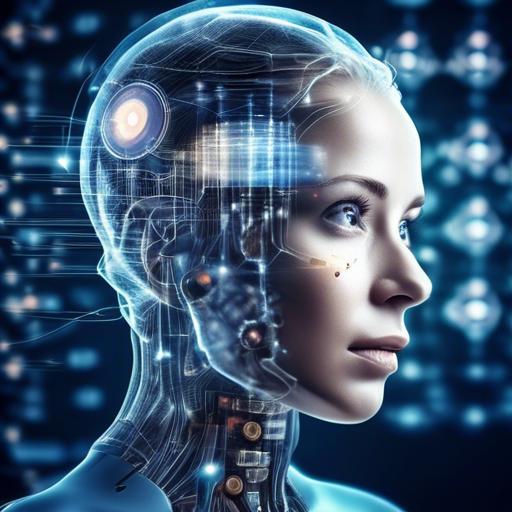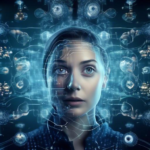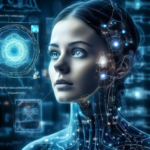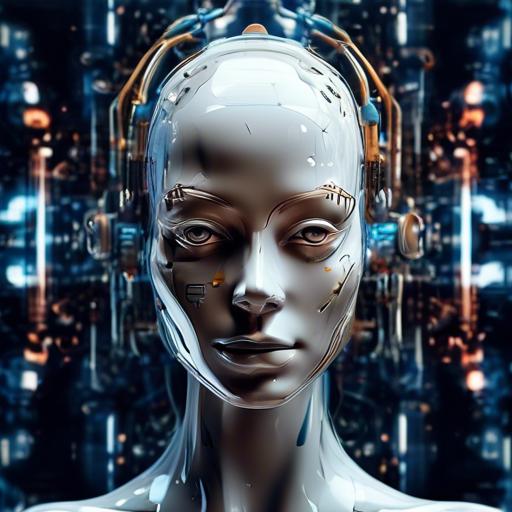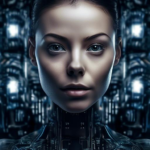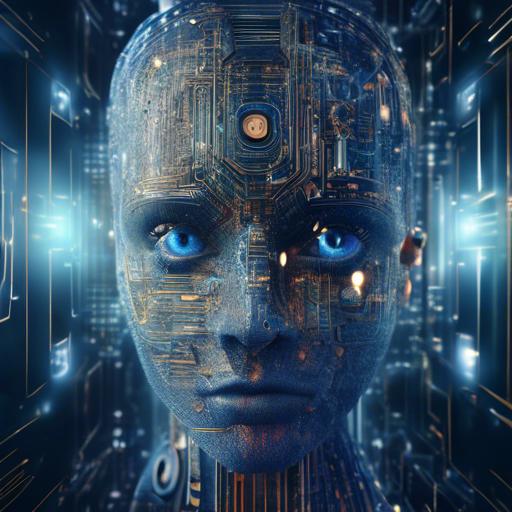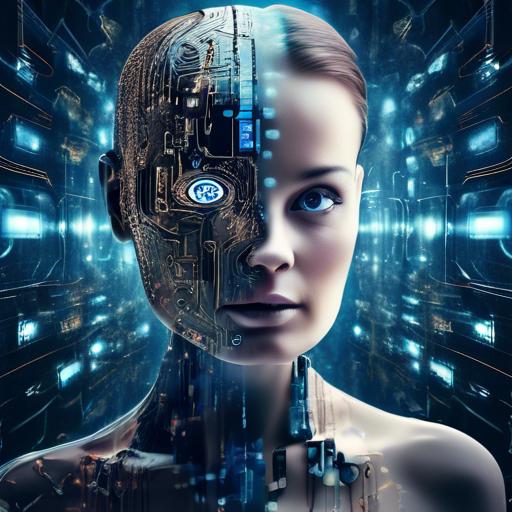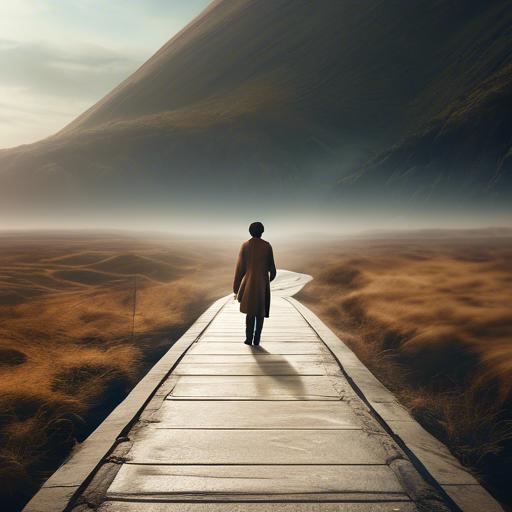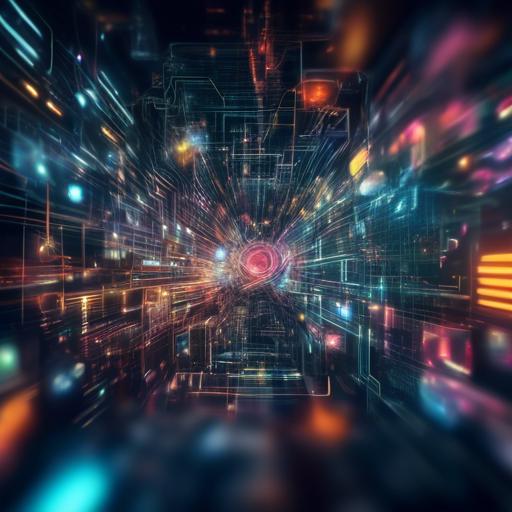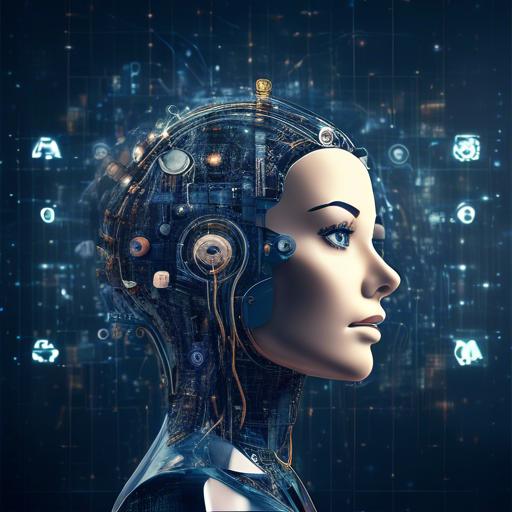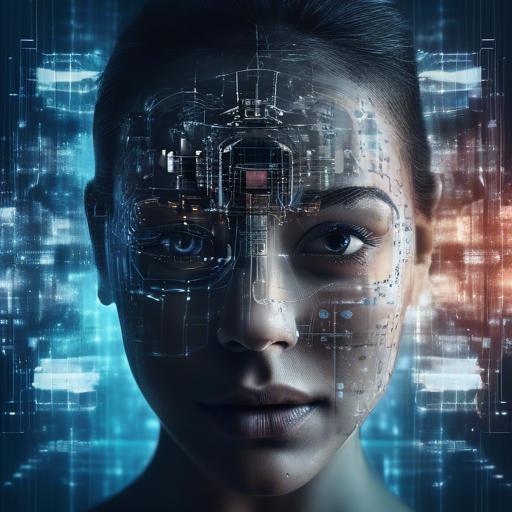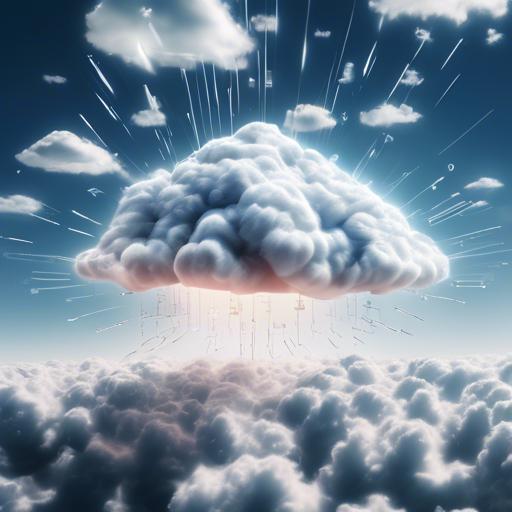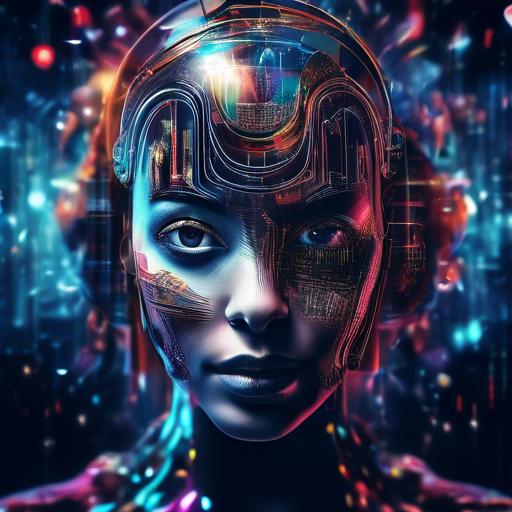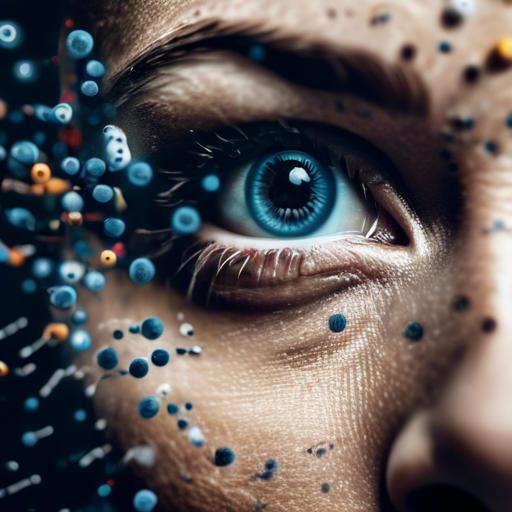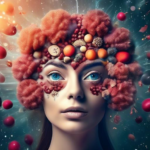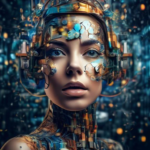In a world where artistry and algorithms coalesce, a transformative force is reshaping our perception of creativity: AI image generation. Picture a virtual artist, tirelessly and flawlessly rendering breathtaking visuals, born from a fusion of scientific ingenuity and boundless imagination. From abstract landscapes to hyper-realistic portraits, AI is now an indispensable ally to human creativity, unlocking new frontiers in digital art.
But what arcane mechanisms drive these marvels of modern innovation? How do lines of code and neural networks culminate in such dazzling displays of artistry? Join us as we embark on a journey into the heart of artificial intelligence, uncovering the science that powers these pixel-perfect wonders. Let us demystify the complex algorithms and computational wizardry, and celebrate this groundbreaking synergy of technology and art. Together, we will explore how AI image generation not only complements but also elevates human creativity to unprecedented heights.
Table of Contents
- Understanding Neural Networks in Art Creation
- Breaking Down GANs: The Magic Behind AI Creativity
- Harnessing Data for Picture-Perfect Results
- Decoding Style Transfer: Bringing Artists Touch to AI
- Training Your AI: Tips for Effective Model Optimization
- Balancing Ethics and Innovation in AI Art
- Real-World Applications: AI in Commercial and Creative Fields
- Future Trends in AI Image Generation
- Empowering Artists with AI: Bridging Human and Machine Collaboration
- Key Takeaways
Understanding Neural Networks in Art Creation
Neural networks, the backbone of most AI image generation tools, are the digital artists working tirelessly behind the scenes. These networks function in layers, much like the layers of paint on a canvas. The journey starts with the input layer, where the initial image data is fed. This data then flows through several hidden layers, where the magic of interpretation, transformation, and creation happens, before finally reaching the output layer, resulting in stunning works of art.
There are different types of neural networks, each serving unique purposes in the realm of art creation:
- Convolutional Neural Networks (CNNs): Widely used for analyzing and generating images due to their proficiency in recognizing patterns and features.
- Generative Adversarial Networks (GANs): These are like creative duos, where one network generates images, and the other critiques, refining the art over iterations.
- Recurrent Neural Networks (RNNs): Primarily used in sequence prediction, but can also add a temporal aspect to generative art, making animations and evolving pieces possible.
| Layer Type | Function |
|---|---|
| Input Layer | Receives raw image data |
| Hidden Layers | Processes data through various transformations |
| Output Layer | Produces the final image |
Beyond their technical makeup, neural networks in art have a significant emotional impact. They bridge the gap between human creativity and machine efficiency. This synergy allows artists to push the boundaries of traditional art forms, exploring new styles and techniques effortlessly. The blending of human inspiration with machine perfection often leads to the creation of breathtaking, avant-garde pieces that challenge our perceptions of art.
However, the journey of an AI-generated image involves more than just neural networks. It includes training datasets filled with millions of images, curated meticulously to teach the AI various styles, subjects, and techniques. This training is akin to an artist’s years of practice, instilling a sense of aesthetics and familiarity with the medium. Although AI lacks emotional intuition, the sheer volume and variety of its training data often enable it to mimic and even innovate beyond classical art forms.
Breaking Down GANs: The Magic Behind AI Creativity
GANs, or Generative Adversarial Networks, are a cornerstone of modern AI image generation. At their core, GANs comprise two neural networks: the generator and the discriminator. These networks engage in a fascinating game of cat and mouse, where the generator creates images, and the discriminator evaluates them for authenticity.
Consider the generator as an imaginative artist trying to create lifelike pictures from scratch. Here’s how it works:
- Starts with random noise
- Transforms the noise through layers of neurons
- Produces an image as realistically as possible
On the other hand, the discriminator acts like a vigilant critic who scrutinizes each image to determine whether it’s a real image or one concocted by the generator. This adversarial process pushes both networks to improve continually.
One of the magical outcomes of GANs is their ability to produce images that can astonish even a seasoned artist. Here are some applications where GANs shine:
- Art Generation: Creating novel artworks that blend styles from multiple artists
- Photo Enhancement: Increasing the resolution of images
- Facial Recognition: Synthesizing faces for security features
To delve a bit deeper, here’s a simplified comparison between the generator and discriminator in a tabular format:
| Generator | Discriminator |
|---|---|
| Creates new images | Evaluates image authenticity |
| Starts with random noise | Compares against real images |
| Refines output gradually | Improves through recognizing patterns |
Harnessing Data for Picture-Perfect Results
In today’s digital age, data is the fuel that powers the magic behind AI-driven image generation. By analyzing vast amounts of data, AI models learn to generate images that are not only ultra-realistic but also tailored to specific preferences and requirements. Imagine a painter with an infinite canvas and an unending palette of colors — that’s essentially what data provides to AI.
**Datasets** form the foundation on which machine learning models are built. These collections, often containing millions of images, help AI understand intricate details such as textures, colors, and lighting conditions. Some of the key attributes that AI focuses on include:
- Color variations and combinations
- Textural patterns
- Lighting and shadows
- Object outlines and details
Moreover, **metadata** associated with these images adds another layer of depth. Metadata might include information like the time of day an image was captured, geographical location, or even the emotions expressed. This additional info enhances the AI’s ability to create contextually accurate and emotionally resonant images.
| Dataset Type | Usage | Examples |
|---|---|---|
| Annotated Datasets | Object recognition | COCO, ImageNet |
| Unlabeled Datasets | Feature extraction | Open Images, YFCC100M |
| Custom Data | Specialized tasks | Client-specific databases |
The potency of **neural networks** lies in their ability to discern and replicate complex patterns. By leveraging the power of Convolutional Neural Networks (CNNs) and Generative Adversarial Networks (GANs), AI systems craft images that rival those generated by human imagination. CNNs excel at breaking down images into manageable, analyzable parts, while GANs work in tandem to refine and perfect the generated results through a competitive process.
As AI continues to evolve, the synergy between data and technology will shape the future of image creation, promising an era of visuals that are not just picture-perfect, but also profoundly imaginative and deeply human.
Decoding Style Transfer: Bringing Artists Touch to AI
Imagine if Van Gogh had the computational power of today in his studio. That’s where **style transfer** comes into play, seamlessly blending the brushstrokes and color palettes of iconic artists with modern-day imagery. Powered by neural networks, this technique allows AI to learn the intricate details of various art styles and apply them to new images, creating mesmerizing pieces that blur the line between human and machine-made art.
Style transfer operates through a three-phased approach:
– ***Content Encoding:*** The AI identifies and captures the core structure and elements of the content image.
- ***Style Extraction:*** Features from the style image, such as brush strokes and color composition, get isolated.
– ***Image Synthesis:*** these extracted elements are amalgamated into the content image, presenting a new creation that marries both the content and style.
| Phase | Description |
|---|---|
| Content Encoding | Captures structure and elements |
| Style Extraction | Isolates brush strokes and colors |
| Image Synthesis | Merges content and style |
Integrating an artist’s touch into an AI-generated image is nothing short of alchemy. The AI diligently learns the distinct style patterns from numerous paintings through deep convolutional neural networks (CNNs). By doing so, it extracts multiple layers of abstraction — from broader strokes at the initial layers to fine details at deeper layers. The amalgamation of these layers results in a harmonious blend that breathes life into mundane content.
Supporting creative pursuits, AI democratizes art, allowing amateurs and professionals alike to create pieces that reflect the style of their favorite artists. The **possibilities are endless**. Whether it’s recreating a family portrait in the style of Monet or designing a custom graphic that feels like a Picasso original, style transfer in AI is revolutionizing the art world and making sophisticated artistic expression accessible to everyone.
Training Your AI: Tips for Effective Model Optimization
Optimizing your AI model is both an art and a science, requiring meticulous attention to detail and innovative strategies. One of the first steps is selecting the right hyperparameters. **Hyperparameters** are like the dials and knobs on a complex machine; tuning them effectively can significantly impact your model’s performance. While there is no one-size-fits-all approach, modern tools like Bayesian optimization or grid search can help automate this process.
- **Learning Rate:** Determines how much the model changes in response to errors.
- **Batch Size:** Number of training examples utilized in one iteration.
- **Epochs:** Number of passes through the entire training dataset.
Another crucial aspect is the **quality of your training data**. Quality triumphs over quantity. Having a smaller dataset with high-quality, well-labeled images can often provide better results than a massive dataset filled with noise. Implement data augmentation techniques like **rotation, scaling, and flipping** to artificially increase your dataset size and introduce variability without compromising quality.
Monitoring your model’s performance is a continuous process. Use tools such as **TensorBoard** to visualize metrics like accuracy and loss in real-time. Identifying trends and patterns can help you make informed decisions. Additionally, **cross-validation** is indispensable in detecting overfitting or underfitting, ensuring your model generalizes well to unseen data.
| Metric | Tool | Purpose |
|---|---|---|
| Accuracy | TensorBoard | Track model performance |
| Loss | TensorBoard | Monitor training progress |
| Validation Score | Cross-Validation | Check for overfitting |
Lastly, don’t overlook the power of **regularization techniques** like Dropout and Batch Normalization. These techniques are designed to combat overfitting by ensuring that the model doesn’t become too accustomed to the training data. Dropout randomly omits neurons during training, while Batch Normalization standardizes inputs for each mini-batch, making your model robust and reliable.
Balancing Ethics and Innovation in AI Art
The rapid advancement of AI-driven art forms presents a unique challenge: how can we embrace innovation while maintaining ethical integrity? Artists and technologists alike must navigate this delicate balance to ensure that AI image generation fosters creativity without compromising moral standards.
One major ethical consideration revolves around **authorship and ownership**. When an algorithm significantly contributes to the creation of an artwork, the question arises: who holds the rights to this digital masterpiece? Some argue the rights should belong to the programmers who designed the AI, while others advocate for the users who defined the inputs. A coherent legal framework is still evolving to address these complexities.
Another layer of ethical concern is the **potential for bias in AI models**. Since AI systems learn from datasets that may inadvertently embed societal biases, the images they generate could propagate harmful stereotypes. To mitigate this, developers must rigorously audit their datasets and refine their models to ensure fair representation across different communities and cultures.
To illustrate the intersection of ethics and innovation, we can consider the following contrasting aspects:
| Innovative Aspect | Ethical Concern |
|---|---|
| Automated Art Creation | Loss of Human Touch |
| Easy Access to Creative Tools | Intellectual Property Theft |
| Expanding Creative Horizons | Perpetuation of Bias |
To navigate these ethical waters, collaboration between technologists, artists, and ethicists is essential. Establishing guidelines for transparency, protecting intellectual property rights, and continuously auditing AI systems for bias are steps toward achieving a harmonious blend of **creativity and ethical responsibility** in AI-generated art.
Real-World Applications: AI in Commercial and Creative Fields
The integration of artificial intelligence into commercial and creative arenas has unlocked unprecedented possibilities. In commercial applications, AI image generation is revolutionizing marketing and branding efforts. Businesses can now generate hyper-realistic images for their products without the need for costly photoshoots. This agility enables more personalized advertising campaigns, where products can be shown in a myriad of settings, tailored to different audience segments.
- Branding: Easily create multiple product versions and contextual images.
- Advertising: Craft personalized ads targeting specific demographics.
- E-commerce: Develop rich, immersive online shopping experiences.
In the realm of creativity, AI serves as both a tool and a collaborator. Artists and designers use AI-generated images to inspire new works, break through creative blocks, and experiment with diverse styles. AI can mimic famous artists or even create unique, never-before-seen styles, resulting in artwork that is both innovative and captivating.
- Art Creation: Generate new art forms by blending different styles.
- Design: Develop novel concepts and prototypes with ease.
- Storytelling: Create visually engaging narratives for books and media.
| Field | AI Application |
|---|---|
| Marketing | Dynamic imagery for campaigns |
| Fashion | Virtual fitting rooms |
| Gaming | Procedural content generation |
| Publishing | Illustration and cover art |
Future Trends in AI Image Generation
The landscape of AI image generation is continuously evolving, revealing fascinating, and sometimes unexpected, innovations. As we peer into the future, several interesting trends are emerging that promise to reshape the way we interact with digital imagery.
Higher Resolution and Realism
Advancements in Generative Adversarial Networks (GANs) are driving significant improvements in the resolution and realism of AI-generated images. The focus is moving towards creating images that are indistinguishable from real photos, pushing the boundaries of what’s possible in digital art and media. Some cutting-edge trends in this domain include:
- Super-Resolution Imaging: Enhancing low-res images to ultra-high-definition quality.
- Photo-realism: Producing images with intricate details and life-like textures.
- Depth and Dimension: Efforts towards achieving 3D realism in 2D images.
Diversity and Ethical Generation
Another critical trend is the focus on diversity and ethical considerations in AI image generation. Developers are increasingly aware of the potential for bias and are implementing measures to ensure fair and inclusive AI models. This involves:
- Diverse Datasets: Using inclusive datasets that represent a wide array of races, ages, and body types.
- Bias Mitigation Techniques: Employing methods to reduce and eliminate biases during the training phase.
- Ethical Guidelines: Developing and adhering to ethical standards for responsible AI usage.
User-Focused Customization
The future holds promise for more user-centric customization in AI-generated images. This involves giving end-users the ability to tweak and personalize images to better meet their needs and preferences. Key trends in customization include:
- Interactive Tools: User-friendly interfaces allowing real-time adjustments.
- Personalization Algorithms: Tailoring images based on individual user profiles and preferences.
- Natural Language Commands: Editing images using simple, conversational language.
| Trend | Benefit |
|---|---|
| Super-Resolution Imaging | Enhances image quality |
| Diverse Datasets | Promotes inclusivity |
| Interactive Tools | Empowers user customization |
As we look ahead, these trends hint at a future where AI image generation is more reliable, inclusive, and user-friendly. The potential applications across industries—from entertainment and advertising to healthcare and education—are boundless. Innovators continue to push the envelope, making the future of AI image generation an exciting space to watch.
Empowering Artists with AI: Bridging Human and Machine Collaboration
Leveraging AI to spur creativity among artists has become a groundbreaking endeavor. The integration of **machine learning models** in art creation builds an unprecedented alliance between human ingenuity and technological precision. AI image generation isn’t merely about automating design; it’s about providing new tools that artists can use to enhance their vision and produce imaginative aesthetics previously thought unattainable.
One of the key components behind AI-driven artistry is the use of **Generative Adversarial Networks (GANs)**. At their core, GANs consist of two neural networks: the generator and the discriminator. The generator strives to create new images, while the discriminator evaluates and classifies these images as real or fake. Over time, this dynamic “game” hones the system’s ability to craft increasingly sophisticated and lifelike artworks.
**Benefits for Artists**:
- Enhanced creativity by breaking conventional boundaries
- Rapid prototyping and visualization of concepts
- Augmentation of traditional techniques with digital enhancements
Moreover, by fine-tuning these systems with their own styles and preferences, artists can maintain their unique voice even while working collaboratively with AI. The result is a rich tapestry of hybrid art that pushes the envelope of conventional creativity.
Here’s a look at some **core features of AI image generation tools** that make them invaluable for artists:
| Feature | Benefit |
|---|---|
| Style Transfer | Apply unique styles and textures to images |
| Image Inpainting | Fill in missing parts of an image seamlessly |
| Upscaling | Enhance image resolution without loss of detail |
Key Takeaways
the science behind AI image generation is a fascinating field that continues to push the boundaries of creativity and innovation. As technology advances, we can expect to see even more amazing developments in the world of artificial intelligence. So let’s continue to support and encourage the brilliant minds working on this groundbreaking technology, as they pave the way for a future where the possibilities are truly endless. Embrace the power of AI and let your imagination run wild, as we embark on this exciting journey into the realm of intelligent image generation. Keep dreaming big and stay curious!

